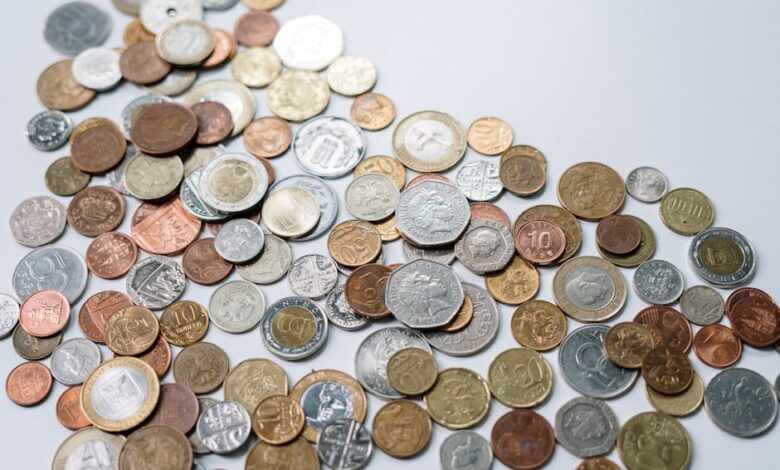Metals in Motion: Navigating Investment, Industry, and Economic Trends

In an increasingly complex and interconnected global economy, metals play a pivotal role that extends beyond traditional uses. This article delves into several key aspects of the metals market, highlighting how various metals contribute to both industrial applications and investment strategies. We begin by exploring silver's unique position as both a vital industrial resource and a popular investment asset. Next, we examine copper prices, which serve as a barometer for global economic health, offering insights into broader market trends. Additionally, we analyze the surging demand for rare earth metals driven by the rise of green energy technologies and their implications for investors. From the ongoing debate between platinum and palladium as investment options to the essential role of metals in diversifying portfolios, this comprehensive discussion will provide valuable insights into the dynamics shaping the metals market today. Finally, we will consider how inflationary pressures and mining regulations influence metal prices and explore the future of aluminum in the context of a sustainable economy. Join us as we navigate the multifaceted landscape of metals and their significance in both industrial and investment realms.
- 1. **Silver's Dual Role: Industrial Applications and Investment Opportunities**
- 2. **Copper Prices as Economic Indicators: What They Reveal About Global Health**
1. **Silver's Dual Role: Industrial Applications and Investment Opportunities**
Silver holds a unique position in both industrial applications and as an investment vehicle, making it a versatile asset in the global market. On the industrial side, silver is renowned for its exceptional conductivity, thermal properties, and antibacterial qualities. These characteristics make it indispensable in various sectors, including electronics, solar energy, and healthcare. In the electronics industry, silver is used in components such as circuit boards and connectors, while the solar sector relies on silver paste for photovoltaic cells. Additionally, the growing demand for antimicrobial coatings in medical devices and consumer products further underscores silver's industrial significance.
Conversely, silver is also viewed as a precious metal investment, often seen as a hedge against inflation and economic uncertainty. Investors are drawn to silver for its historical role as a store of value, similar to gold, but with the added appeal of lower market prices and higher volatility. This dual nature allows silver to attract a diverse group of investors, from those seeking to diversify their portfolios to those looking to capitalize on price fluctuations.
The interplay between silver's industrial demand and its investment appeal can create distinct market dynamics. For instance, during periods of robust economic growth, industrial demand can drive prices higher, while in times of economic downturn, investors may flock to silver as a safe haven. This dual role not only enhances silver's market complexity but also positions it as a critical asset in contemporary investment strategies. As industries continue to innovate and the investment landscape evolves, silver's unique attributes are likely to keep it at the forefront of both industrial and financial markets.
Silver plays a dual role in both industrial applications and investment markets, making it a unique commodity with diverse influences on its demand and pricing. In industry, silver is essential for electronics, solar panels, and medical devices due to its excellent conductivity and antibacterial properties. The growth of technology sectors, particularly renewable energy, has significantly increased silver's industrial demand, with solar energy installations being a key driver. This trend is expected to continue as the world shifts towards greener technologies, further cementing silver's position in the industrial landscape.
Conversely, in investment markets, silver is often viewed as a safe-haven asset, similar to gold. Investors turn to silver during periods of economic uncertainty, inflation, or geopolitical tensions, driving up its price. The interplay between its industrial use and investment demand creates a complex market dynamic. For instance, during economic downturns, industrial demand may drop, yet investment demand could surge, stabilizing prices.
Copper prices serve as a barometer for global economic health, reflecting industrial activity and construction growth. Rising prices often indicate robust demand driven by infrastructure development and manufacturing. Conversely, declining copper prices may signal economic slowdowns or reduced manufacturing output. This correlation makes copper a key indicator for investors looking to gauge economic trends.
The increasing emphasis on green energy technologies is creating heightened demand for rare earth metals, which are critical for manufacturing batteries, electric vehicles, and other clean energy solutions. As nations commit to reducing carbon emissions and transitioning to sustainable energy sources, the demand for these metals is expected to rise sharply. This shift could lead to supply constraints and increased prices, making rare earth metals a focal point for investors and industries alike.
When comparing platinum and palladium, both metals have unique investment attributes influenced by market conditions. Platinum, traditionally used in jewelry and automotive catalytic converters, faces challenges due to declining diesel vehicle sales. In contrast, palladium has gained favor for its use in gasoline engines, pushing its price higher. Investors must consider these trends, along with supply chain factors and geopolitical dynamics, to determine which metal offers better long-term investment potential.
Metals play a crucial role in diversifying investment portfolios. Including a mix of precious and industrial metals can provide a hedge against inflation and economic instability. As inflation rises, the intrinsic value of metals often increases, making them attractive to investors seeking to protect their purchasing power. This relationship highlights the importance of metals in balancing asset allocation strategies.
The future of aluminum appears promising in a sustainable economy. As lightweight materials become essential for energy efficiency in transportation and construction, aluminum's recyclability enhances its appeal. The demand for aluminum is likely to grow as industries seek to reduce carbon footprints and embrace sustainable practices.
Lastly, mining regulations significantly impact metal prices by influencing production costs and supply levels. Stricter regulations can lead to reduced output and higher compliance costs, which can drive prices up. Conversely, more lenient regulations may increase supply, potentially lowering prices. Investors must stay informed about regulatory changes in key mining regions, as these factors can directly affect market conditions and investment outcomes.
2. **Copper Prices as Economic Indicators: What They Reveal About Global Health**
Copper prices serve as a crucial barometer of global economic health due to their extensive use in various industries, including construction, manufacturing, and electronics. Often referred to as "Dr. Copper," this metal is known for its ability to reflect the state of the economy because of its sensitivity to changes in demand. When economic activity is robust, the demand for copper tends to increase, driving prices higher. Conversely, when economic conditions are weak, demand diminishes, leading to a drop in copper prices.
Fluctuations in copper prices can highlight trends in industrial production, infrastructure development, and consumer spending. For example, rising copper prices may indicate increased construction activity, suggesting that economies are growing and investing in infrastructure. Alternatively, a significant decline in prices can signal economic slowdown or reduced manufacturing output, as businesses may cut back on production due to lower consumer demand.
Additionally, global events and geopolitical tensions can influence copper prices. Supply chain disruptions, trade policies, and mining output changes all play a vital role in determining price levels. For instance, a strike in a major copper-producing country can lead to supply shortages, prompting prices to rise even amid economic uncertainty.
Investors and analysts closely monitor copper price trends not only for insights into the industrial sector but also to gauge broader economic conditions. As a result, copper prices can be seen as a leading economic indicator, providing valuable information about future economic performance and potential investment opportunities.
In conclusion, the intricate relationship between metals and the global economy underscores their multifaceted roles in both industrial applications and investment strategies. Silver stands out for its dual significance, serving not only as a vital component in various industrial processes but also as a sought-after asset for investors. Similarly, copper prices act as a barometer for economic health, reflecting larger trends that can influence market behaviors.
The rising demand for rare earth metals, driven by advancements in green energy technologies, highlights the crucial role these materials play in the transition to a sustainable future. Meanwhile, the debate between platinum and palladium as investment choices illustrates the complexities of the precious metals market, where unique characteristics and market conditions can sway investor preferences.
Furthermore, the diversification of investment portfolios with metals offers a strategic approach to mitigating risks, particularly in the face of inflation, which can significantly affect the prices of both precious and industrial metals. As we look ahead, aluminum's potential in a sustainable economy positions it as a key player in the evolving landscape of materials.
Lastly, the influence of mining regulations on metal prices serves as a reminder of the delicate balance between economic growth and environmental stewardship. As these dynamics continue to unfold, stakeholders across industries and investment sectors must remain vigilant, adapting to the changes in demand, regulation, and market sentiment to navigate the complexities of the metal markets effectively.





